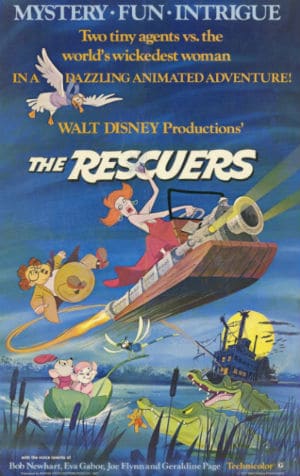
Welcome to Revisiting Disney! Today, we’re looking at that movie which introduced us to a whole new world of mice, The Rescuers! Like always, I have labeled each category so if you want to skip to the parts that interest you most, feel free. And, of course, if you have any thoughts, burning or otherwise, please share in the comments!
BACKGROUND OF THE RESCUERS
The Rescuers was released on June 22nd, 1977 and runs 78 minutes. Directed by Wolfgang Reitherman, The Rescuers was a success. People loved it at the time, and while modern critics have said that it is less exciting than its sequel (to be fair, The Rescuers Down Under is an amazing movie for many reasons), at the time it was adored, and by many, it still is.
Animation Historian Adrian Bailey quotes Leonard Maltin as calling The Rescuers “the best cartoon feature to come from the studio since 101 Dalmatians…” and said that “it has what so many other animated films have lacked-heart” (Bailey 1982:236).
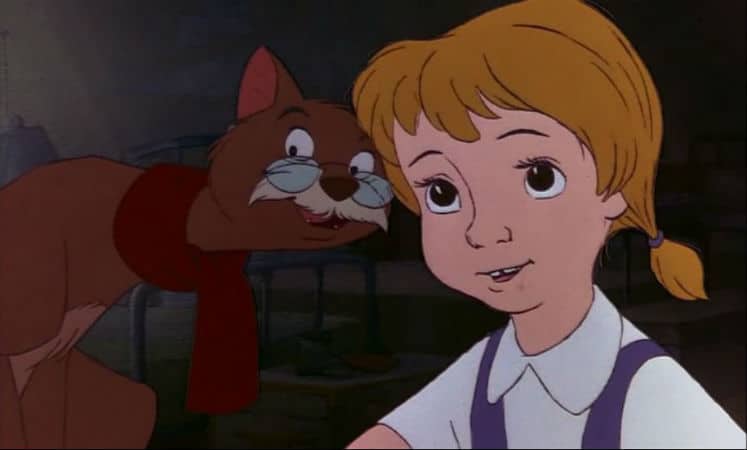
Photo: Disney
Film historians have called The Rescuers the end of the second Golden Age of the Disney Company, claiming that that Golden Age started with Cinderella in 1950. Wherever you fall on the spectrum of feelings about The Rescuers, it was popular and remains loved today.
The film was so popular, in fact, that it was the first Disney film to have a sequel, and it was almost given a television series (although the series was later reworked to become Chip ‘n’ Dale Rescue Rangers).
MUSIC
The Rescuers was nominated for an Oscar in 1978 for Best Music, Original Song for “Someone’s Waiting For You.” The music was written by Sammy Fain, with Carol Connors and Ayn Robbins writing the lyrics.
Sammy Fain is known for his work on Forrest Gump, Raging Bull, The Hangover, and The Notebook, as he wrote many songs that would be reused later on. He was nominated for nine Oscars and won two of them. One Oscar was for “Love is a Many-Splendored Thing” in 1955, while the other was for “Secret Love,” in 1953. Rain was born in 1902 in New York City and died in 1989 in Los Angeles.
Carol Connors was born in 1940 and is still living today. She wrote the theme for Rocky and worked on both The Rescuers and The Rescuers Down Under. There isn’t much information available on Ayn Robbins, but she co-wrote the songs for The Rescuers and The Rescuers Down Under, as well as the theme from Rocky.
Artie Butler composed the score. Butler was born in 1942 in Brooklyn and is still living today. He worked on Annie Hall, Grease 2, the Wonder Woman TV movie, and other movies and television shows.
Like in Bambi, the music in The Rescuers was not sung by the characters but was used in the background. The music doesn’t overwhelm the action but serves to enhance it, something that I really am appreciating the more I watch Disney movies. There’s an art to that, and the Disney Studio had some talented people working on their music.
ANIMATION
According to IMDB, animators Frank Thomas and Ollie Johnston considered The Rescuers to be the best film that the Studio had made after Disney’s death. It was also the last film worked on by veteran animator Milt Kahl, one of the Nine Old Men. Don Bluth was also listed as a Directing Animator, alongside Milt Kahl, Ollie Johnston, and Frank Thomas. In a way, The Rescuers was passing the torch to the next generation of animators, Don Bluth among them.
Milt Kahl animated the villain, Madame Medusa, almost completely on his own, because none of his assistants were able to replicate his work. He is recording as saying that he enjoyed working on Madame Medusa more than on any of his other characters because she was a bit more out there. Kahl was almost always given realistic and human characters to animate and, like Marc Davis had enjoyed animating Cruella De’ Vil, enjoyed animating a character that was more over the top. Supposedly, he based her, in part, on his ex-wife.
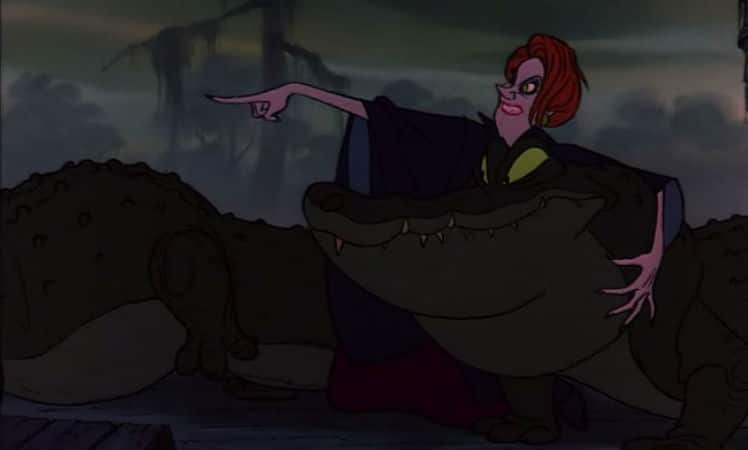
Photo: Disney
Milt (Milton) Kahl was born in San Francisco in 1909 and died on April 19th, 1987 of pneumonia. One of the Nine Old Men, he was a draftsman and, as a result of that, often was the man who animated the human characters. Two great examples of his work are Prince Phillip and Samson the horse in Sleeping Beauty. He served as a directing animator in many of the later films he worked on.
Kahl worked for Disney from June 1934 to April 1976, working on Disney films from Snow White and the Seven Dwarfs until his last film, The Rescuers. Additionally, he has been quoted as saying that he felt it was impossible to be a good animator without having drafting skills.
He also was recorded as hating Wolfgang Reitherman’s habit of reusing animation from earlier films; he found it embarrassing when fans recognized recycled animation. While Reitherman thought it was a fun Easter Egg for the fans, Kahl found it embarrassing to animators.

Photo: Disney
The Rescuers was the first of the Disney films to elaborate on the Xerox process. Not only was it the first of the Disney films to use color-xerography. Where the earlier Disney films used only black toner (giving it a sketchier look), The Rescuers used a lighter gray, to make the lines softer.
There are also callbacks in the animation style to Marc Davis’ work on Cruella De Vil in 101 Dalmatians and the work of Garth Williams’, who illustrated the original novels. The opening sequence, with the journey of Penny’s bottle and the credits, were paintings by Mel Shaw, shot in a way to look more dramatic.
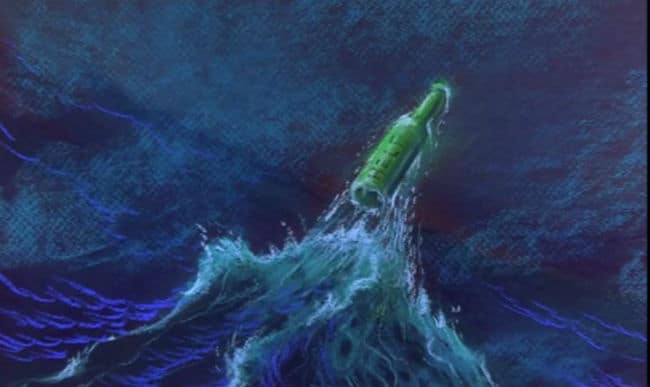
Photo: Disney
This was also the last film that John Lounsbery worked on. Another of the Nine Old Men, he was born in 1911 in Ohio and had passed away in 1976 during surgery. Art Stevens stepped into his role as Directing Animator on this piece, but as one of the Nine Old Men, Lounsbery worked on. Another of the Nine Old Men, he was born in 1911 in Ohio and had passed away in 1976 during surgery. Art Stevens stepped into his role as Directing Animator on this piece, but as one of the Nine Old Men, Lounsbery was involved in many of the films we all remember fondly.
Lounsbery worked for Disney from July 1935 until his death in February 1976, making him the first of the Nine Old Men to pass away. He seems to be forgotten most often, and has the least written on him, but his art was wonderful. He worked as a directing animator and would later be named a Disney Legend.
THE PLOT
The usual characters were involved in the story; Ken Anderson, Larry Clemmons, and others; this time there was also the addition of Frank Thomas to the story team. We open before the credits with a little girl in the bayou, throwing a bottle over the side of a barge.
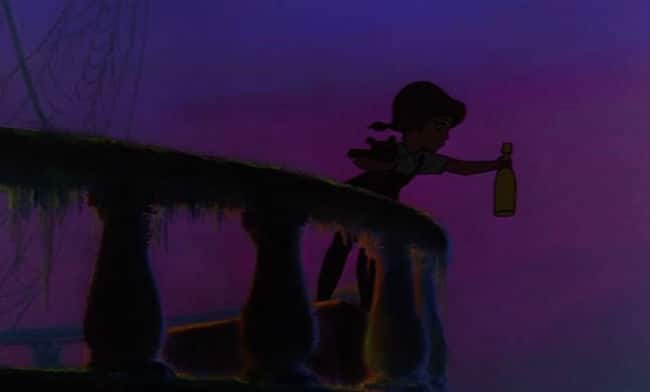
Photo: Disney
The credits are written on top of the paintings of the adventures of the bottle. Eventually, the bottle is discovered by a group of mice. These mice take it to the Rescue Aid Society, an international group of mice who save people and hold their meetings in the United Nations building in New York City.
When they discover that the bottle is a plea for help from a little girl to her orphanage, Miss Bianca volunteers to go and help her. As the council doesn’t want her to go alone, she selects Bernard, the janitor, as her co-agent. The two set off to the orphanage to see if they can find out where Penny has gone.
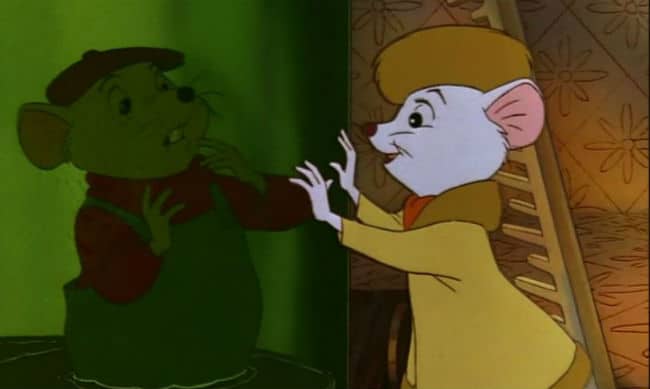
Photo: Disney
From Rufus, the orphanage’s cat, they learn that a crazy woman who owns a pawnshop, Madame Medusa, tried to give Penny a ride. Rufus was Penny’s friend at the orphanage and tried to cheer her up when she wasn’t adopted. He thought it worked at the time, but when Penny went missing, he assumed, like everyone else, that she ran away. Since the mice had received the message Penny sent, they know something more sinister is afoot, so they set out to investigate Madame Medusa’s pawnshop. When our heroes investigate the pawnshop, they discover that Medusa and her partner do have Penny, in a place called Devil’s Bayou.
Although they were unable to travel to Penny with Medusa herself, they are able to book a flight with Albatross Air, flying with Orville. They travel to Devil’s Bayou and discover that Penny has tried to escape again, only to be caught by Medusa’s pet gators, Brutus and Nero. When Bernard and Miss Bianca arrive, they also meet the animals who live in the swamp, who all hate Medusa and want to drive her out and save poor Penny.
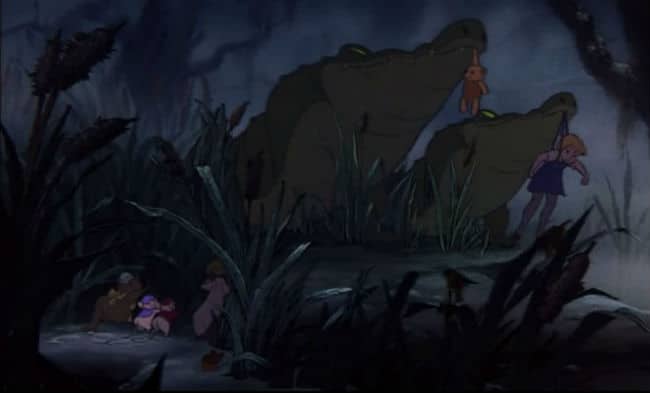
Photo: Disney
Penny is being used by Madame Medusa and her partner, Mr. Snoops, to get the world’s largest diamond, the Devil’s Eye, which is thought to be in a cave that only a child or a very small adult can get down into. Not only is this extremely dangerous; the hole fills up with water when the tide comes in, but Penny is afraid of the dark and of drowning. Medusa, however, is determined to have that diamond and promises to take Penny back to the orphanage once she has it.
Bernard and Miss Bianca find Penny and together they begin planning an escape. Before that can put their plan into action, however, Madame Medusa takes Penny’s teddy bear, Teddy, hostage and sends Penny down into the hole to get the diamond again. Bernard and Miss Bianca go with her, and together they retrieve the diamond just before the hole fills up with water due to the incoming tide.
Rather than let Penny go like she promised, Madame Medusa threatens to kill both the little girl who knows her secret and her partner. Medusa here establishes herself as one of the great villains in the Disney line-up, to me at least, by not only kidnapping a little girl and trying to kill her but by also consistently calling Penny homely and reminding her that she’s too plain to be adopted.
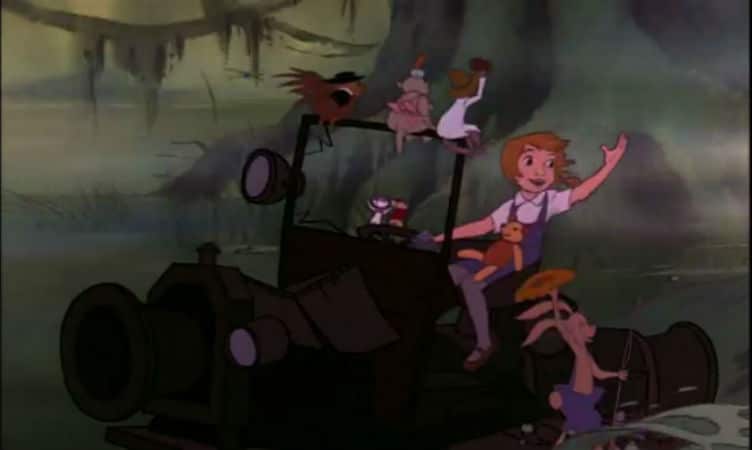
Photo: Disney
Luckily, Medusa is foiled. The escape plan works; Penny escapes, takes the Devil’s Eye with her (it belongs in a museum!) and is later adopted, Bernard and Miss Bianca contract with Orville and set out on another mission, and Madame Medusa is trapped by her gators until she is (we assume) arrested. It’s what I would call a happy ending.
SOURCE MATERIAL
Before Walt Disney had died, he had gotten the rights to a series of books by Margery Sharp on some mice and their rescues. Margery Sharp was born Clara Margery Melita Sharp on January 25th, 1905 in Wiltshire, England. She died on March 14th, 1991 in Suffolk, but wrote multiple books, including a nine-book series that included “Miss Bianca,” “The Rescuers,” “The Turret,” and “Miss Bianca and the Salt Mines.” The first two were the inspiration for The Rescuers.
In the original novel, the Rescue Aid Society was the Mouse Prisoners’ Aid Society or the M.P.A.S., and they didn’t rescue people in danger. Their goal was to hang out with and help entertain prisoners who were in solitude.
Walt Disney had worked on some of the story, which had been in production since 1962. In the original book, the mice go to Norway to help rescue a poet from prison, but Walt thought that was a touch too dark. The original changes to the story included using a polar bear named Willie as the victim (and tying in Cruella De Vil as the villain) though later the second of Sharp’s books was used as the main inspiration for the story.
When the film came out, sales of the entire series became bestsellers. I haven’t read them personally, but I have heard good things about them and they are definitely on my list.
The 1970’s
The 1970’s, as we have been discussing, was an era of great change. While issues that had been bubbling for a few decades continued to do so, and a movement to go back to the “good old days” of the 1950’s was gaining supporters, a new scandal that would have a major impact on the US political landscape occurred.
Yes, now is that time when I am going to talk about the Watergate Scandal. Watergate occurred in 1972 and technically wrapped up in 1974 with President Nixon’s resignation, but the scandal had lasting consequences.
It all started when President Nixon won his reelection in 1972. Although he won by a substantial margin, he was a tad paranoid and, as the History Channel puts it, “approved of attempts to discredit those who opposed him.” This paranoia, unfortunately, would be his undoing.
In June of that year, there was a break-in at the Democratic National Committee’s office, located in the Watergate building. Five burglars were involved, and they all had political ties to Nixon.
This, by itself, was not necessarily damning, but Nixon had ordered the FBI to stop investigating the break-in and told his staff to cover up the incident. These actions, more than the break-in itself, lead to Congress, in 1974, approving three articles of impeachment. What the American people hate most, it seems, is a liar.
President Nixon resigned before he could be impeached, but his charges would have been obstruction of justice, misuse of federal agencies, and defying the authority of Congress. I sometimes wonder what would have happened if Nixon had just apologized for the break-in and moved on. What would history remember him for then?
When Gerald Ford took over Office, he pardoned Nixon as one of his first acts. Ford is said to have said that Americans needed to move on and heal from being deceived by their President. He may have been right, but many Americans did not agree with his actions.
Watergate had lasting consequences. It can be blamed as a cause for many people who today have a distaste for politics or lack of trust in politicians, and also resulted in many people of the day tuning out from the political world.
Although the 1970’s were a time that the History Channel calls “trend-laden” and “fad-happy,” there was a lot of unrest and anger. The two extremes make the 70s a decade well worth a study.
LESSONS LEARNED
Of course, the first lesson is to not get in the car with strangers. Penny got kidnapped anyway, but she did refuse to get into the car with Madame Medusa, in the beginning, so her instincts were correct. Don’t do it.
Secondly, you are not limited by your size. Penny was just a little girl, but she was able to hold her own against her kidnappers and two giant gators. She eventually escaped. Bernard, Bianca, and the rest of the animals were able to use their small size to their advantage when it came to saving Penny. Finally, even though they were just little mice, Bernard, Miss Bianca, and the rest of the Rescue Aid Society were able to impact the world in big ways, even saving lives.
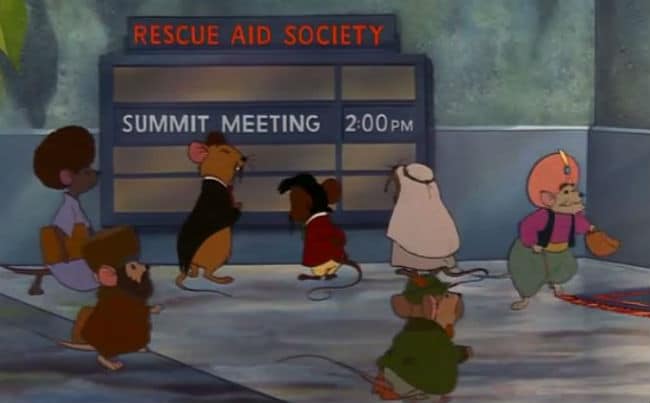
Photo: Disney
Additionally, don’t let your fears control you, know what they are and use them to your advantage. Bernard was afraid of everything (he was always my favorite), and he knew that about himself. He used his fears and phobias to make and execute plans that make his mission safer. He is also less likely to use shortcuts than his braver co-agent, Miss Bianca, and this balances out their team.
Another lesson is that you can’t judge by appearances. Rufus the cat seems like a clear villain in a film about mice, but he is actually very helpful and offers vital information to Bernard and Miss Bianca that they use to find Penny. Even though he is a cat, he’s a true friend to Penny. Even though he wonders what two mice can do that the humans couldn’t, he still helps them.
DOES IT HOLD UP?
Objectively speaking, this movie is a beautiful, action-packed and just fun. It’s a movie full of heart, and one that uses unlikely heroes to accomplish great things. The Rescuers is a movie that I loved as a kid and that I still love as an adult. Funny and full of intrigue, it reminds me that not only can small people who feel useless do great things but that even the most scared and timid person can be a hero. All of us have the potential for greatness, and that’s a lesson worth remembering. Even if I have yet to meet a talking mouse, and my cat still won’t offer me helpful advice, this movie is solid and full of Disney magic.
For next week: The Fox and the Hound
If you enjoyed this post and the others in the Revisiting Disney series, and have found yourself wishing that you could find them all in one convenient and bound book with eight extra essays, there is an option for you! Check out A Journey Through Disney: My Look Back Through Disney Canon, now available on Amazon as both a Kindle book ($4.99) and a paperback ($11.99).
OTHER SOURCES:
http://www.history.com/topics/1970s
http://studioservices.go.com/disneystudios/history.html
https://thewaltdisneycompany.com/about-disney/disney-history
Bailey, Adrian. Walt Disney’s World of Fantasy. Everest House Publishers. New York, New York. 1982.
Finch, Christopher. The Art of Walt Disney: From Mickey Mouse to the Magic Kingdom. Harry N. Abrams, Inc. New York, New York. 1975.
Sale, Roger. Fairy Tales and After: From Snow White to E.B. White. Harvard University Press. Cambridge, MA, 1978.
Tatar, Maria. The Annotated Classic Fairy Tales. W.W. Norton and Company. New York and London, 2002.
Thomas, Frank. Disney’s Art of Animation From Mickey Mouse to Hercules. Hyperion. New York, New York. 1992.
Wright, Gordon. The Ordeal of Total War: 1939-1945. Harper Torchbooks, Harper & Row. New York, Hagerstown, San Francisco, and London, 1968.
ARE YOU A ROMANCE FAN? FOLLOW THE SILVER PETTICOAT REVIEW:
 Our romance-themed entertainment site is on a mission to help you find the best period dramas, romance movies, TV shows, and books. Other topics include Jane Austen, Classic Hollywood, TV Couples, Fairy Tales, Romantic Living, Romanticism, and more. We’re damsels not in distress fighting for the all-new optimistic Romantic Revolution. Join us and subscribe. For more information, see our About, Old-Fashioned Romance 101, Modern Romanticism 101, and Romantic Living 101.
Our romance-themed entertainment site is on a mission to help you find the best period dramas, romance movies, TV shows, and books. Other topics include Jane Austen, Classic Hollywood, TV Couples, Fairy Tales, Romantic Living, Romanticism, and more. We’re damsels not in distress fighting for the all-new optimistic Romantic Revolution. Join us and subscribe. For more information, see our About, Old-Fashioned Romance 101, Modern Romanticism 101, and Romantic Living 101.

Comments are closed.